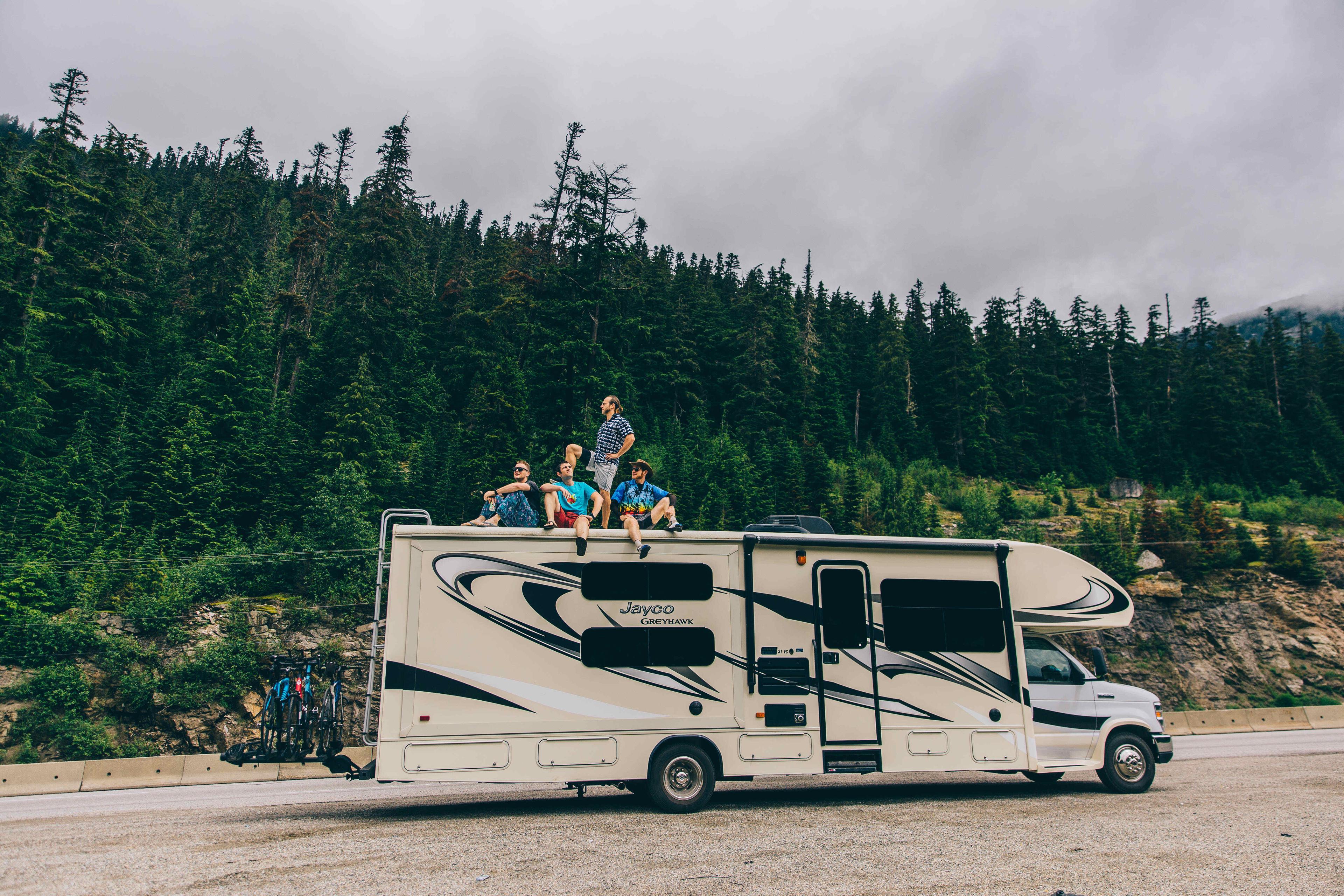Oct 21, 2021
How much does it cost to live in an RV?
How much does it cost to live in an RV?
See how much it costs to live in an RV full-time. Get detailed insights to budget effectively for your full-time camping lifestyle.
Common questions
Blog Post
Education

Have you been considering moving into your RV for full-time living? With the cost of housing going up, the availability of remote work and remote schooling, and the ever-improving cellular data infrastructure allowing you to do that anywhere with a signal, RV life has never been so practical.
But if you want to live in an RV, there are several factors to consider when it comes to the cost. Living on the road can be budget-friendly or cost a small fortune, depending on how you approach it. In this guide, we’ll go over the range of prices you can expect to pay to live in an RV.
Full-time RV costs to consider
Here are the various expenses you’ll want to keep in mind when calculating the cost of full-time RV living.
RV financing payments
If you are considering moving into an RV full-time, it will be a lot less expensive if you already own the RV that you want to live in. But if you need to purchase a rig, those loan payments will be a huge factor in the monthly or annual cost of living.
The monthly payments themselves can vary depending on your financing options, but for this article, we will consider a 5-year loan agreement with a 5% interest rate and no down payment. That sort of interest rate is fairly standard, assuming you have good credit.
If you’re looking for a lower monthly payment, you can increase the down payment to reduce the size of the loan, cutting monthly payments and overall interest cost. You could also extend to a longer financing plan, though your overall cost will increase since you will be paying more in interest. A shorter loan will cost more monthly but save you money in the long run. You can determine the best course of action for your financial situation, but for this guide, we’re going to look at that standard loan agreement. From there, how much you will be paying depends on the value and class of the RV you’re buying.
Let’s look at a few options:
Camper trailer
While you can find some travel trailers on the cheaper end and some very luxurious outings at the high end, an average travel trailer should cost around $25,000 new. Over 60 months, with 5% interest, your monthly payment should amount to $471 monthly. If you’re looking at used options, you can find comfortable living spaces for around $15,000, lowering the monthly payment to only $283.
GET A PERSONALIZED QUOTE
No two RVs are alike— and neither is the insurance to go with it! Get a quote from Roamly based on your location, your RV, and more.
Class C motorhome
Buying a full motorhome will typically be much more expensive than a travel trailer since you are buying the mobile home and truck all in one. For a lightly used Class C motorhome, or a lower-end new model, you can expect to pay around $50,000. This would amount to a monthly payment of about $945 with our parameters. You can lessen this by increasing the length of the loan, but remember that you will pay significantly more long-term in interest payments. While it might be jarring, keep in mind that you will not have to make payments on a car to tow this vehicle like with a trailer.
Class A motorhome
For the largest class of motorhome, you can expect to pay around $100,000 for a basic, quality vehicle. But $200,000 is easily possible for an average Class A motorhome, and plenty of models can hit half a million with options. Assuming the same 5-year/5%-interest loan, you should budget for just under $1,900 a month for a Class A motorhome.
Insurance
If you are living in your RV for more than 6 months out of the year, you will have to pay for full-time insurance. This includes liability coverage, collision and comprehensive coverage, property damage, loss assessment, emergency expense coverage, medical payment coverage, and adjacent structures coverage. How much you pay for insurance will depend on a variety of factors, such as the size of your coverage, the deductible, your driving history, and the value of the vehicle insured.
For a travel trailer, you will likely be paying about $500-1,000 a year for coverage. This costs less than a motorhome since it isn’t its own motorized vehicle, and much of the coverage needed for a motorhome will be covered by your car’s auto insurance. For a Class C motorhome, expect to pay around $1,000-$1,500 a year depending on how valuable the vehicle is and how much coverage you want. For a Class A motorhome, expect to pay somewhere in the range of $2,000-2,500 a year for insurance.
It might seem expensive to insure your motorhome, but keep in mind you might be avoiding the costs of auto and home insurance if you’re living in your RV.
EXPLORE FULL-TIME RV COVERAGE
Are you a full-time RVer wanting to protect you and your home on wheels? We have everything you need to know about the coverage you need in our nifty full-time RV insurance guide. Ready for a quote? We can help you with a full-timer RV insurance quote.
Campsite rentals
While an RV grants you the freedom to live wherever you want and frees you of the constraints of traditional housing, you’ll still likely need to pay for where you stay. How much you pay for the land you park on depends on three things: location, location, and location.
More than likely, you will be living in a full-time RV park. Many full-timers want the essentials offered by these locations, especially electrical, water, and sewage hookups. Without these amenities, the cost of running a generator for electricity or investing in solar panels will add up quickly, and you will have to spend a lot of time finding somewhere to dispose of your waste and acquire fresh water.
Prices will vary from city to city or state to state, but an RV park with full-time rentals and a full utility hookup will typically cost between $500 and $1,200 a month.
KEEP THE LIGHTS ON
Want to avoid a dead battery when you’re on the road? Read up on the best batteries for RVers in this blog.
Total costs
Adding it all up, the price of living in an RV can vary widely.
- For a travel trailer, you can expect to pay between $825 and $1,750 a month.
- For a Class C motorhome, you can expect to pay between $1,500 and $2,300 a month
- For a Class A motorhome, you can look to pay around $2,600 to $3,300 a month.
Keep in mind, this is just for housing. You’ll want to consider other monthly expenses as well, including:
- Food
- Gas
- Utilities like satellite internet
- Subscriptions (Netflix, Hulu, or other entertainment you want on the road)
- Sightseeing and activities
These are also just general figures, so the numbers could vary greatly if you already own an RV, have above- or below-average credit, have the cash for a large down payment, want longer or shorter financing terms, or want a much higher-end RV.
And when it comes to your RV insurance needs, we've got you covered there too. Click the button below for a free quote.
Roamly Insurance Group, LLC ("Roamly") is a licensed general agent for affiliated and non-affiliated insurance companies. Roamly is licensed as an agency in all states in which products are offered. Roamly license numbers. Availability and qualification for coverage, terms, rates, and discounts may vary by jurisdiction. We do not in any way imply that the materials on the site or products are available in jurisdictions in which we are not licensed to do business or that we are soliciting business in any such jurisdiction. Coverage under your insurance policy is subject to the terms and conditions of that policy and is ultimately the decision of the buyer.
Policies provided by Roamly are underwritten by Spinnaker Insurance Company, Progressive Insurance Company, Safeco Insurance Company, Foremost Insurance Company, National General Insurance, Mobilitas Insurance Company, and others.
Connect
© 2025 Roamly All rights reserved.
